Mapping breeding birds
The original version of this document is located at https://docs.qfield.org/success-stories/mapping-breeding-birds-in-the-Wadden-Sea
Use of QField for mapping breeding birds in the Wadden Sea
By Benjamin Gnep, Schutzstation Wattenmeer e.V.
29.07.2019
Goal and field constraints
The Wadden Sea in Denmark, Germany and The Netherlands is of outstanding
importance for many breeding bird species. Annually, the Schutzstation
Wattenmeer participates in the Wadden Sea wide trilateral monitoring and
assessment program (TMAP) and monitors the number of breeding birds in
more than 100 monitoring areas in Schleswig-Holstein / Germany. For a
number of species we monitor a significant share of the entire German
breeding population.
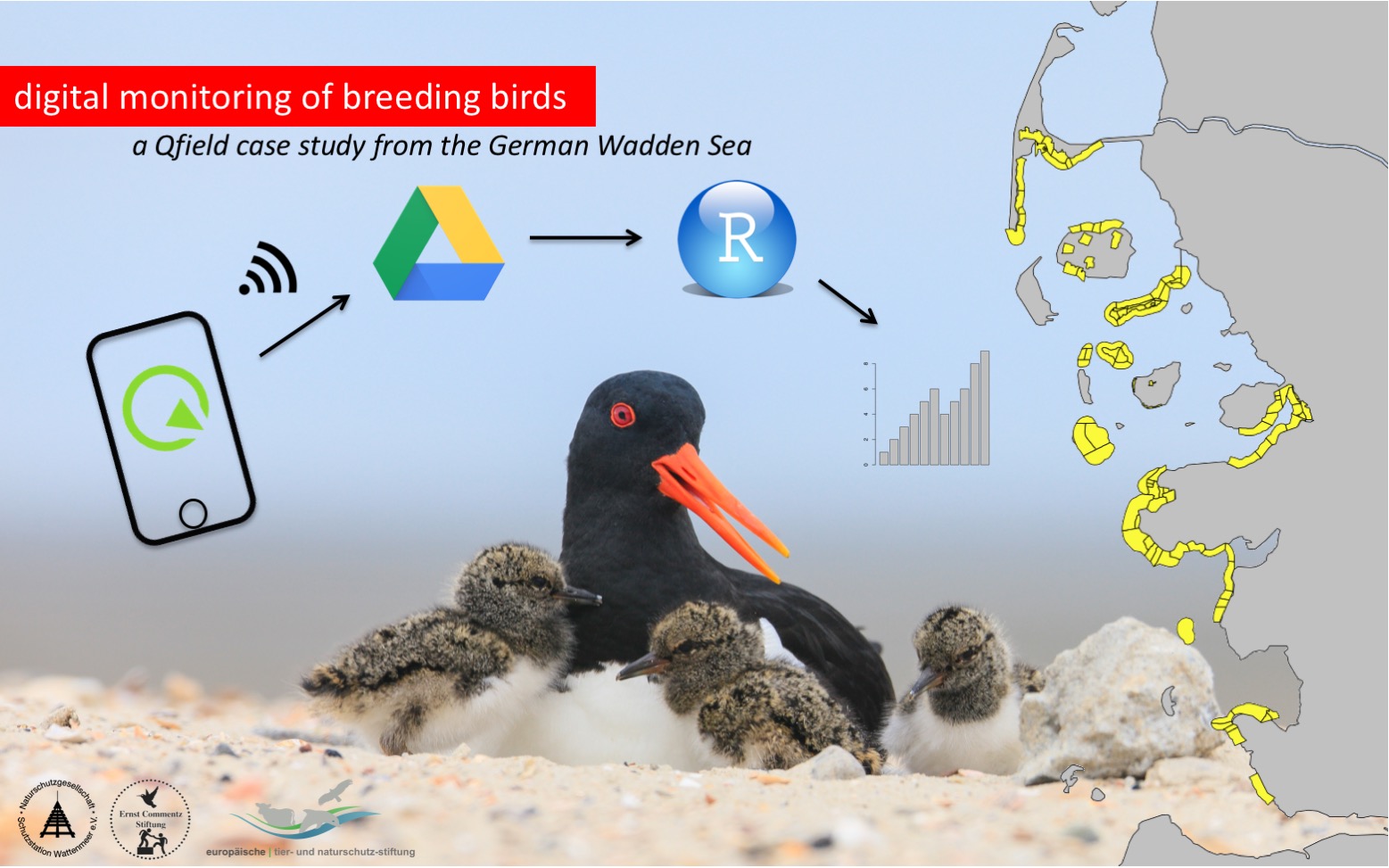
Most fieldwork is carried out by annually changing volunteers which
usually do not have much experience. Good supervision during the
monitoring period in spring is thus very important. At the same time the
amount of collected data is a significant bureaucratic challenge.
Until 2018 printed paper maps were used to collect the data in the
field. Major disadvantages of the analogue system were:
- orientation in the field was rather difficult without GPS
positioning - all results had to be counted and transferred to data tables and
GIS manually, transmission errors were likely (about 18,000
observations are collected every year) - data could only be reviewed after the monitoring period and
unlikely observations could not be checked directly
For this reason, we have implemented a digital monitoring workflow using
the power of QField, the advantages of a cloud storage system and the
computational power of R. Most tasks are now fully automatized in R. Via
the cloud data from all areas can be accessed and evaluated with daily
topicality.
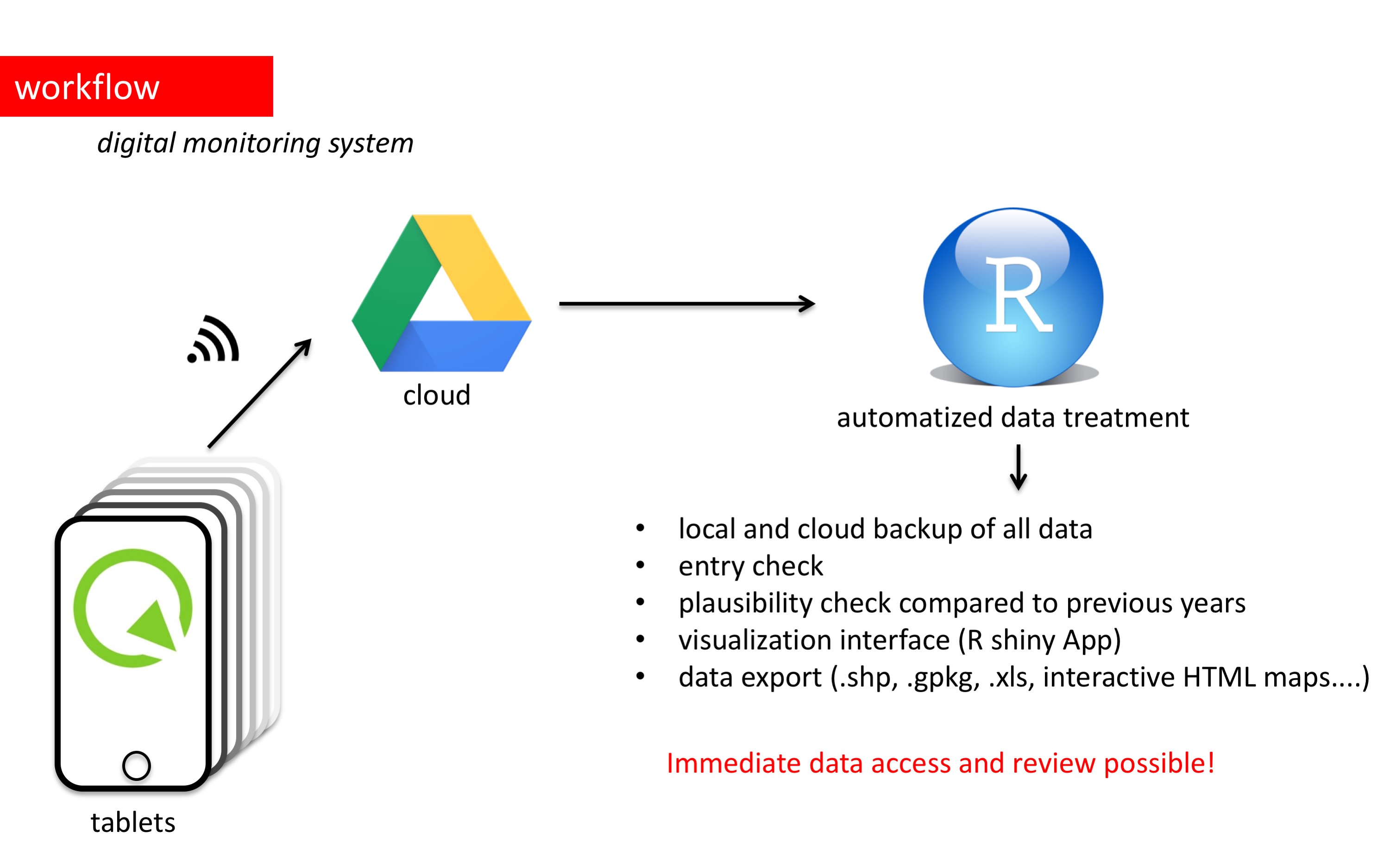
In spring 2019 we tested our system with seven tablet devices spread
over seven of in total 12 different monitoring stations.
Project preparation
On a desktop computer we set up a QGIS project containing a high-resolution aerial image as background layer for orientation in the field.
For the monitoring data we created a custom GeoPackage database with predefined dropdown columns and entry restrictions.
Additionally, we added predefined walking paths to guide the volunteers and to further standardise our monitoring.
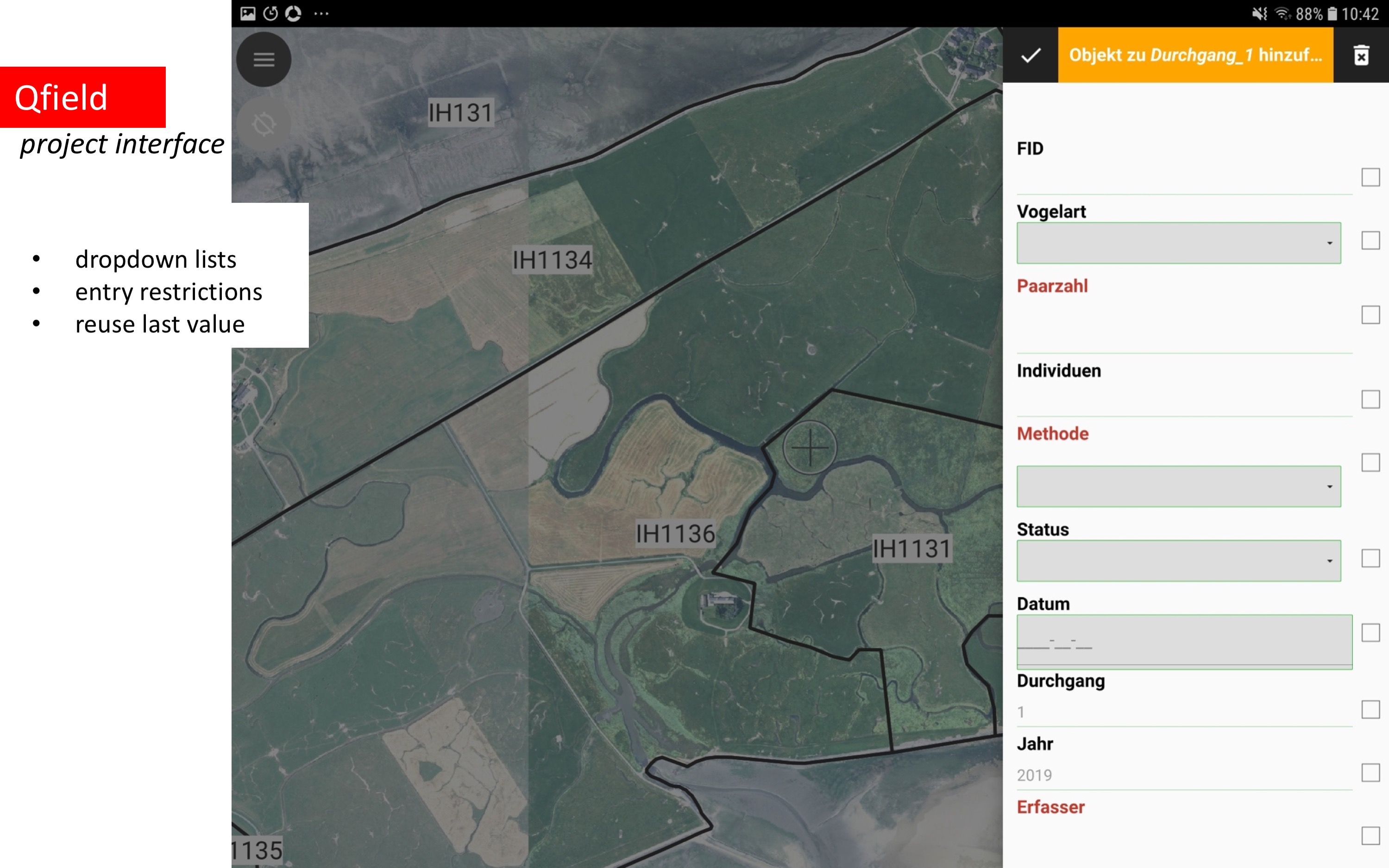
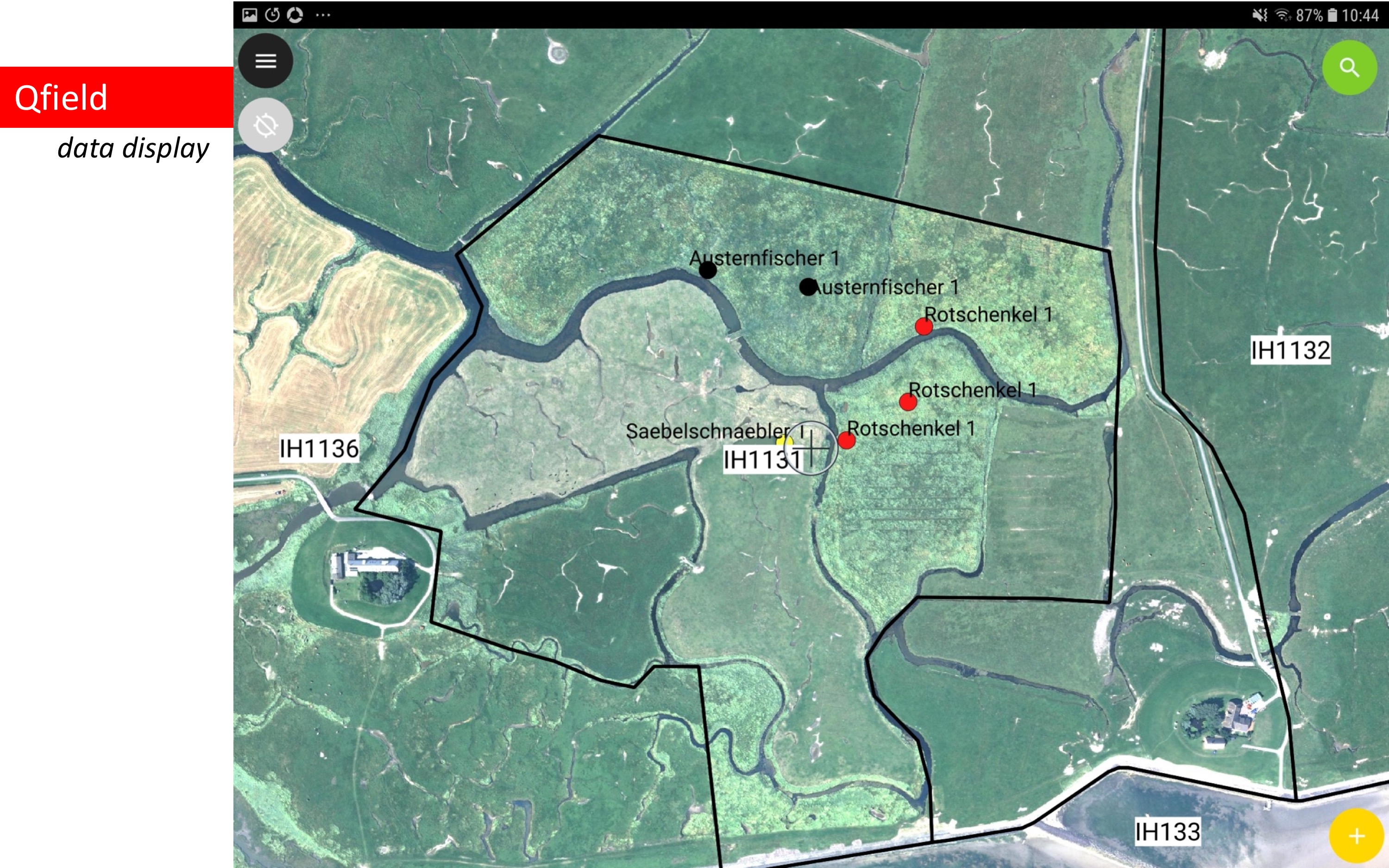
We used an additional synchronisation App that automatically uploaded
the field data from the tablet to a Google Drive cloud after fieldwork.
For data download, automatized backup, data review and export we wrote a
R script.
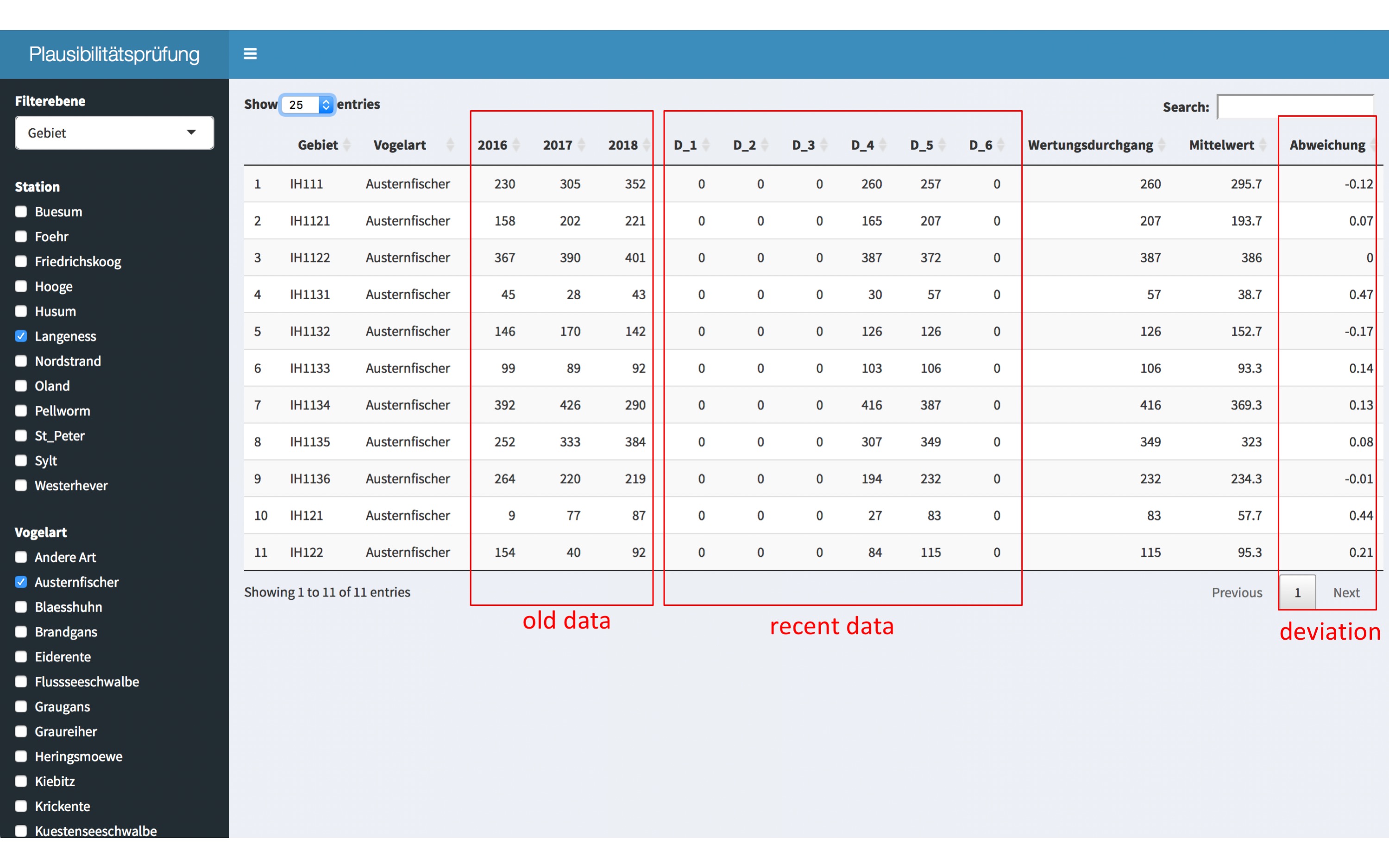
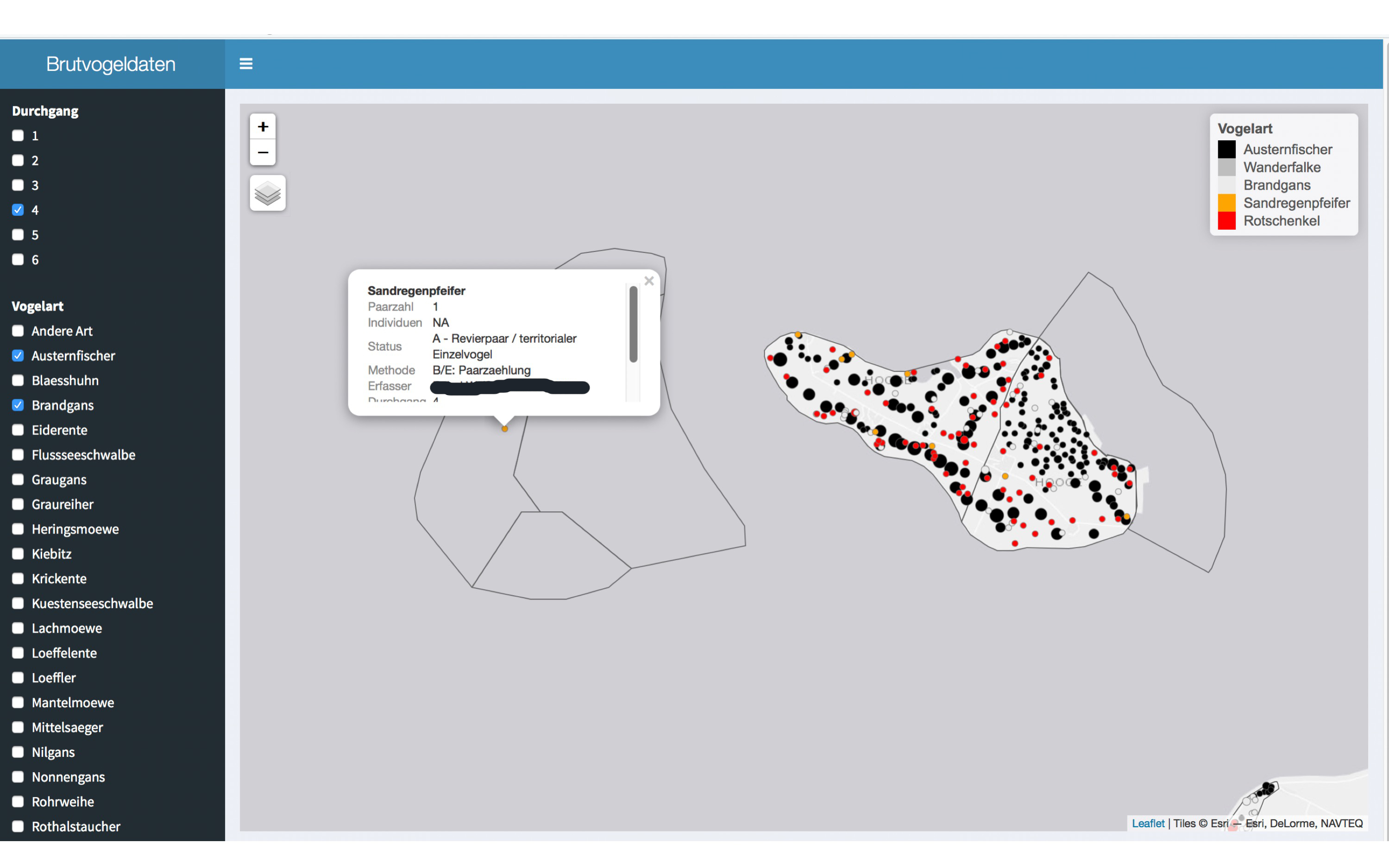
The general concept of QField as a simplified field application of QGIS
turned out to be very useful for our work with volunteers. While we can
set up a project with a high level of customization including all our
needs in QGIS, field workers only need to understand the basics. A big
advantage: unwanted changes are almost impossible in QField.
Field work
During field work orientation was much easier on the tablets compared to
printed paper maps especially in the extensive salt marshes. Data entry
was pretty fast thanks to the possibility to automatically reuse the
last entered value. Logging observations on the tablet only took a
little bit extra time in comparison to paper maps.
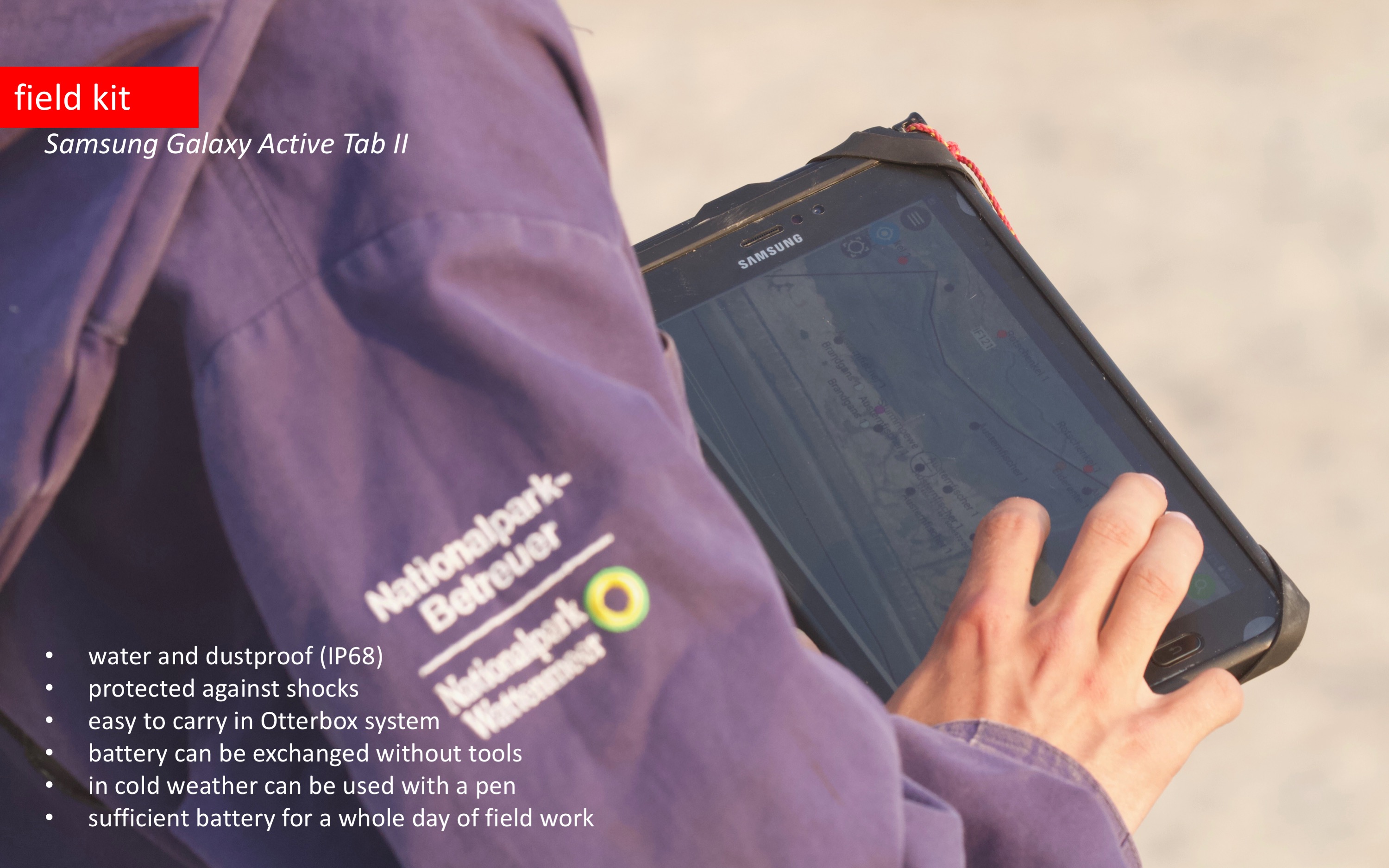
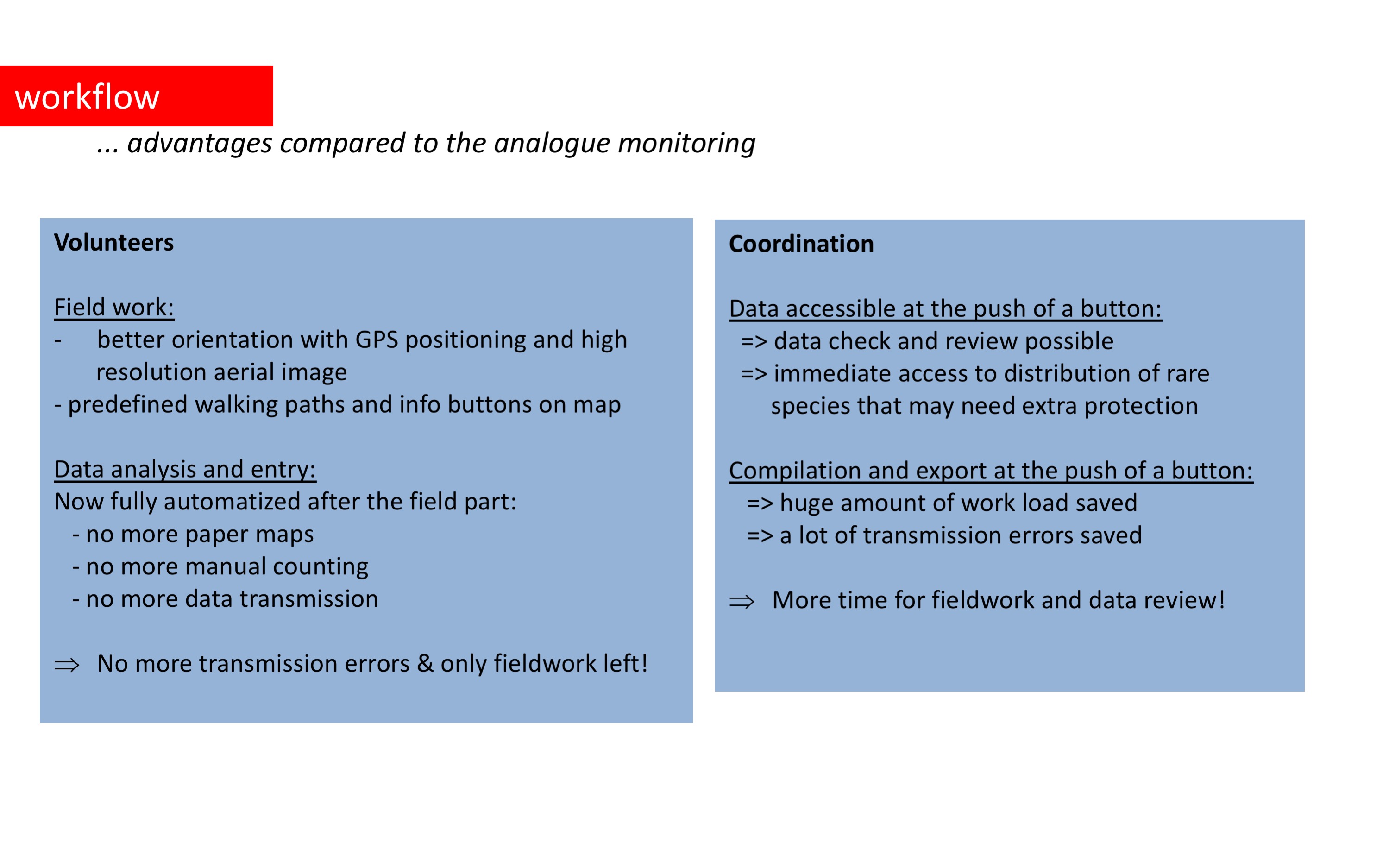
Evaluation and future
We had no software problems during a testing period in spring 2019 and
everything worked as planned. In an evaluation survey all participants
stated that they preferred using the tablet rather than the analogue
paper maps for field work. The use of the custom QField project was
evaluated as straightforward and easy.
In total more than 18.000 data points were collected in the field. Due
to automatized data treatment we saved a huge amount of office time and
avoided transmission errors. Also, data collected with tablets and
GPS-positioning will be of much higher spatial accuracy. In the future
we will thus fully switch to tablet based fieldwork.
Acknowledgement
We thank the Ernst-Commentz Stiftung, the Europäischer Tier- und
Naturschutz Stiftung and the Adolf und Hildegard Isler Stiftung for
generously supporting our project. Additionally, we want to thank the
developers of QField and R for offering fantastic open source software.
It is great that, due to free software, such projects can be implemented
by a comparatively small conservation society.
Related Articles
Geologic Mapping
The original version of this document is located at https://docs.qfield.org/success-stories/geologic-mapping Geologic Mapping with QField By Rohanna Gibson, Structural Geologist, Terrane Geoscience Goal To collect new data on bedrock geology and view ...Sample projects
The original version of this document is located at https://docs.qfield.org/get-started/sample-projects Sample projects QField ships sample projects by default. You can use these projects to explore some of the QField configuration details in QGIS ...Ground Truth Data Collection
The original version of this document is located at https://docs.qfield.org/success-stories/lulc-mapping-fiji Ground Truth Data Collection Using QField for LULC Mapping in Fiji By Kevin Davies, School of Geosciences, The University of Sydney Purpose ...QField General Settings
The original version of this document is located at https://docs.qfield.org/how-to/general/settings QField General settings The general settings screen allows you to control the basic appearance and behaviour of QField. There are two ways in which ...My first project using QGIS and QField with QFieldCloud
The original version of this document is located at https://docs.qfield.org/get-started/tutorials/my-first-project My first project This page will go through a step by step example of how to prepare a simple QField project containing a points layer, ...